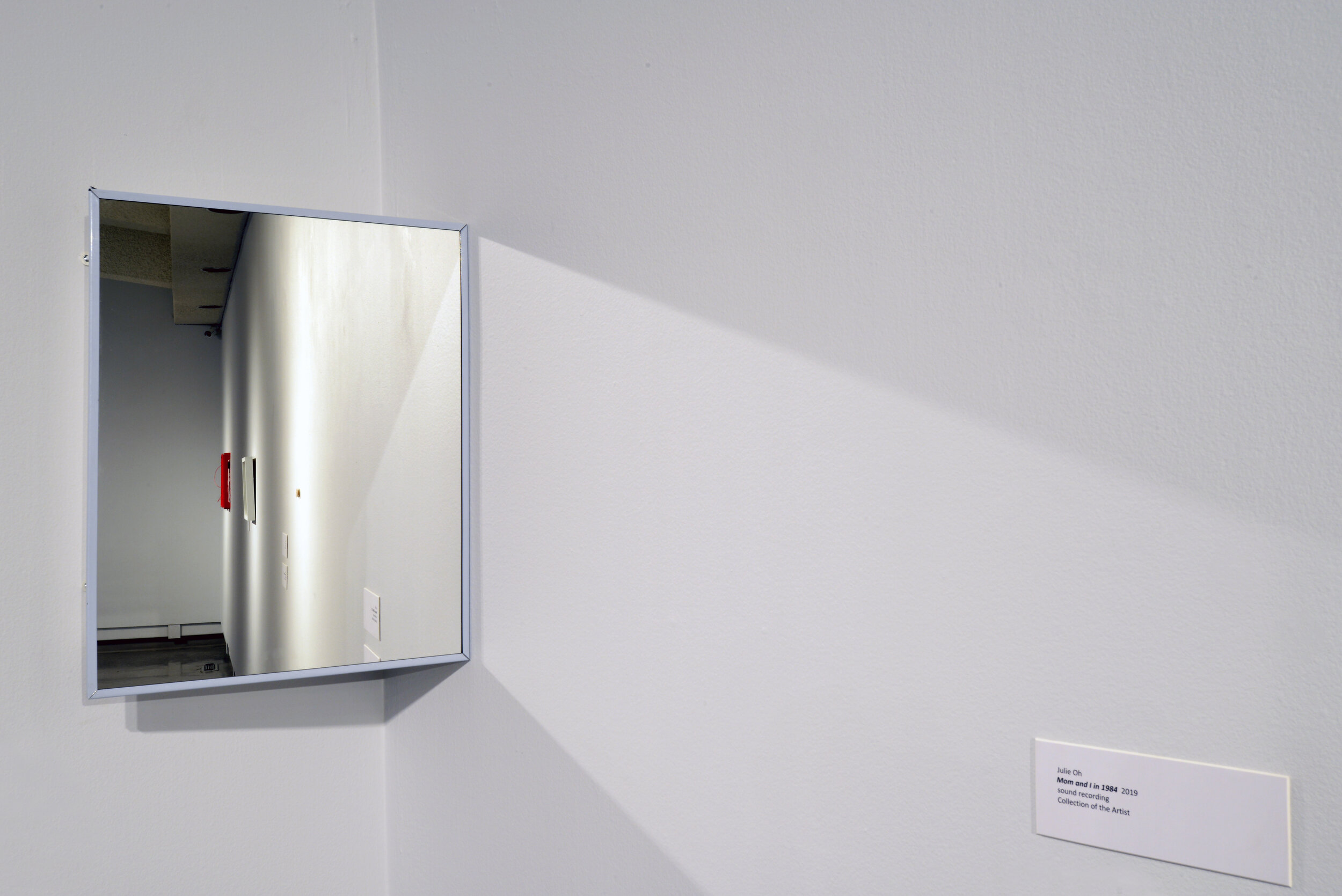Julie Oh, Chess, 2019, mixed media Photo: courtesy of the artist.
Julie Oh works with photography, video, and installation to examine our understanding of, and relationships with, common objects. By questioning her selected object’s use and nature using intuitive, sometimes nonsensical approaches, Oh positions the viewer to consider the use and values of these objects in new ways.
Julie Oh is an emerging artist from Saskatoon. She completed her MFA as a Fulbright Fellow at the School of the Art Institute of Chicago in 2012 and holds a BFA from the University of Saskatchewan. Her work has been featured in group exhibitions including: Living Architecture (2018), 6018 North, Chicago; Double Gaze (2018), ACRE Projects Gallery, Chicago; Punctured Landscape (2017), Art Museum of the Americas, Washington, DC; The New Normal (2017), Supa Salon, Istanbul, Turkey and The Hanger (an UMAM D&R Project), Beirut, Lebanon.
Essay↑
My grandfather’s grey socks
By Jennifer Matotek
I am 6 years old, in my grandparent’s living room. I play with my Fisher Price gas station in front of my grandfather’s feet. He sits in a chair. His socks are grey and worn. I stare at his big toenails through the translucent cotton. He explains my mother is sick with cancer. Then he scoops me onto his lap. He holds me and cries. I cry too. I don’t understand what cancer is, but I don’t want my mother to feel sick. When I recall this moment – learning about my mother’s cancer – I see my grandfather’s grey socks, his toenails straining against the fabric.
Material objects constitute our lives. The objects Julie Oh uses to create the artworks in her exhibition are largely commercial items. Some objects are displayed without alteration, like a mirrored cabinet with a container of baby powder inside. Some artworks combine everyday objects – a group of prescription bottles sit on the top of a small office cabinet, arranged like chessboard pieces. Other objects are altered in ways that make them nearly unrecognizable, such as the glowing innards of a heating pad, extracted from its’ blanket.
By stripping objects of their contexts, Oh lays them bare for close observation. The objects are made vulnerable, permeable. Like a body. Space is created for viewers to connect their own experiences and memories to Oh’s artworks.
Tunnel. The larynx, the voice. The voice of Oh’s mother can be heard in the gallery, playing in a recording between Oh and her mother. The recording is from 1984, when Julie Oh was six months old.
Air. Breath. Space. Spaces that enter objects. Spaces between objects. Holes in rolls of masking tape. Holes in the top of a container of baby powder. Sound waves traveling through the air, which once tunneled into a tape recorder, through a microphone.
Mother. In the recording, Oh’s mother asks Julie, in Korean, to say things like Dad, Mom, Water, Bye Bye, Piggyback, Baby. Oh cries when her mother refuses to let her touch the microphone during the recording.
When parents get sick, objects help them to become well again – prescription bottles, heated blankets. Toys entertain children while a parent recuperates. Board games are meant to bring family members together, to relieve stress and encourage play. I used to enjoy the board game ‘Operation’ – a game which Oh uses to construct several works in the exhibition, a game where players must successfully remove white body parts from openings in a cartoon body without slipping their tweezers into the electrified gameboard. But when my mother got sick, I stopped playing ‘Operation’.
There is only one unaltered object in Oh’s exhibition that seems out of place, that pulls us to consider the objects from the artist’s perspective rather than through the frame of our own memories and experiences. A voice prosthesis. Oh’s mother now uses a voice prosthesis, implanted after a period of illness. Looking at the exhibition through the prosthesis as a tunnel, through the air, as a frame, the exhibition may reflect some of Oh’s experiences as the daughter of her mother. The objects in the exhibition take on the weight of something else: a nostalgia, a mourning for the past, and a touching tribute.
When I think about my mother’s cancer – I see my grandfather’s grey socks, his toenails straining against the fabric.
Installation Images ↑
Photos by Don Hall



















